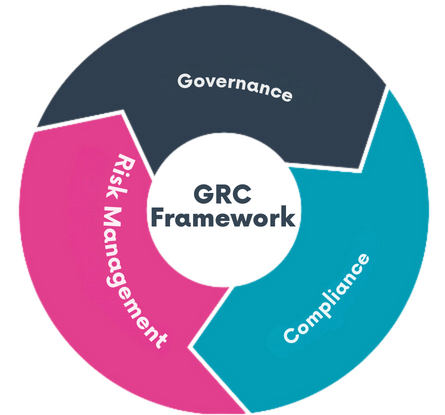
GRC Framework: A Comprehensive Guide
Governance, Risk, and Compliance (GRC) Framework: A Comprehensive Guide
In today’s complex business environment, organisations face numerous challenges related to governance, risk management, and compliance (GRC). To address these challenges effectively, many companies are adopting a GRC framework. This article provides an overview of the GRC framework, its components, and how to implement them.
What is a GRC Framework?
The GRC framework is a structured approach that helps organisations align their governance, risk management, and compliance activities with their business objectives. It provides a holistic view of the organisation’s risk profile, regulatory requirements, and internal controls, enabling better decision-making and risk mitigation.
Components of a GRC Framework
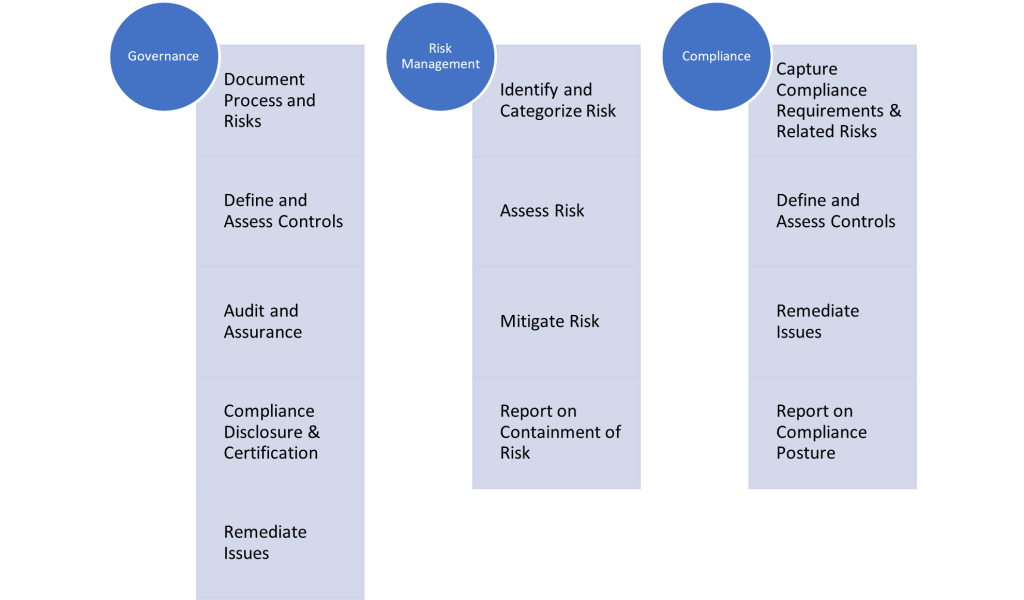
- Governance: Governance refers to the system of rules, practices, and processes by which an organisation is directed and controlled. It involves defining the organisation’s objectives, establishing policies and procedures, and monitoring performance to ensure compliance with laws, regulations, and internal policies.
- Risk Management: Risk management involves identifying, assessing, and prioritising risks to the organisation’s objectives. It includes developing strategies to mitigate or avoid risks and monitoring the effectiveness of these strategies.
- Compliance: Compliance refers to the process of adhering to laws, regulations, standards, and internal policies relevant to the organisation’s operations. It involves ensuring that the organization is aware of its legal and regulatory obligations and implementing measures to meet those obligations.
- Previously, the term ‘GRC’ lacked a defined focus for managing the various types of risks, such as ESG, cyber, third-party risk, etc. However, as the scope of GRC is expanding, along with the growing complexity, velocity, and volume of risks, the management of ESG, cyber, TPRM, and other risks has evolved into distinct yet connected disciplines that are laser focused on managing the risks end-to-end.
- Support for complex organizational models with the ability to roll up at various organizational levels, while retaining the ability to cost-effectively deploy the solution within a department to enable a tactical compliance or risk initiative.
- Ability to support multiple regulations: corporate initiatives (SOX, risk management, ethics, policy compliance, etc.) as well as compliance initiatives (cGMP, HACCP, ISO 9000, GDPR, PCI-DSS, HIPAA, DORA, FCPA, Dodd Frank, etc.). It is critical that a GRC solution can support all governance, risk, and compliance management initiatives within a company. A wrong choice would force the organization to revert to having to support multiple point solutions.
- Integrated policy and document management capability that should cut across all GRC functions.
How to Implement a GRC Framework
Implementing a GRC framework involves several key steps:
- Assessment: Begin by assessing the organisation’s current governance, risk management, and compliance practices. Identify gaps and areas for improvement.
- Define Objectives: Clearly define the organisation’s objectives and how they align with its governance, risk management, and compliance goals.
- Develop Policies and Procedures: Develop policies and procedures that outline the organisation’s approach to governance, risk management, and compliance.
- Risk Identification: Identify and assess the organisation’s risks, including operational, financial, and compliance risks.
- Risk Mitigation: Develop strategies to mitigate or avoid risks, including implementing controls and monitoring mechanisms.
- Compliance Monitoring: Implement processes to monitor compliance with laws, regulations, and internal policies.
- Review and Improve: Regularly review the GRC framework to ensure its effectiveness and make improvements as necessary.
GRC Software and Tools
There are several GRC (Governance, Risk, and Compliance) software and tools available in the market that can help organisations streamline their GRC processes and activities. These tools offer a range of features to support governance, risk management, compliance, and internal control activities. Here are some popular GRC software and tools:
- RSA Archer: RSA Archer is a widely used GRC platform that offers a comprehensive suite of tools for managing governance, risk, and compliance activities. It provides modules for risk management, policy management, incident management, and compliance management, among others.
- MetricStream: MetricStream is another popular GRC platform that offers a range of solutions for managing risk, compliance, and quality management processes. It provides modules for risk assessment, policy management, audit management, and regulatory compliance.
- ServiceNow GRC: ServiceNow GRC is a GRC platform that is integrated with the ServiceNow platform, allowing organizations to manage GRC processes alongside other IT and business processes. It offers modules for risk management, policy management, audit management, and compliance management.
- SAP GRC: SAP GRC is a GRC platform that integrates with SAP’s enterprise resource planning (ERP) systems, allowing organizations to manage GRC processes within their existing SAP environment. It offers modules for risk management, access control, and compliance management.
- ACL GRC: ACL GRC is a GRC platform that offers solutions for managing risk, compliance, and audit processes. It provides modules for risk assessment, control monitoring, and audit management, among others.
- LogicManager: LogicManager is a GRC platform that offers solutions for managing risk, compliance, and policy management processes. It provides modules for risk assessment, control monitoring, and incident management.
Benefits of a GRC Framework
Implementing a GRC framework offers several benefits:
- Improved Decision Making: By providing a holistic view of risks and compliance requirements, a GRC framework helps organisations make informed decisions.
- Enhanced Risk Management: A GRC framework enables organisations to identify, assess, and mitigate risks effectively, reducing the likelihood of costly incidents.
- Better Compliance: By centralising compliance efforts, a GRC framework helps organisations stay compliant with laws, regulations, and internal policies.
- Increased Efficiency: A GRC framework streamlines governance, risk management, and compliance processes, leading to greater efficiency and cost savings.
What Are the Challenges of GRC?
While the GRC (Governance, Risk, and Compliance) framework offers many benefits, implementing and maintaining it can pose several challenges for organisations:
- Complexity: GRC frameworks can be complex, especially for large organizations with diverse operations. Managing the interdependencies between governance, risk management, and compliance activities can be challenging.
- Integration: Integrating GRC processes and systems across the organization can be difficult. Different departments may have their own systems and processes, making it challenging to achieve a unified GRC framework.
- Resource Constraints: Implementing and maintaining a GRC framework requires dedicated resources, including personnel, technology, and budget. Many organizations struggle to allocate sufficient resources to GRC activities.
- Regulatory Changes: Keeping up with regulatory changes and ensuring compliance can be challenging. Regulations are constantly evolving, requiring organizations to adapt their GRC frameworks accordingly.
- Data Management: GRC relies heavily on data for risk assessments, compliance monitoring, and decision-making. Managing and analyzing large volumes of data can be challenging, especially if the organization lacks the necessary tools and expertise.
- Cultural Resistance: Implementing a GRC framework requires a cultural shift towards risk awareness and compliance. Resistance to change from employees and stakeholders can hinder the adoption of GRC practices.
- Silos: Siloed information and communication within organizations can hinder the effectiveness of GRC. Lack of collaboration and coordination between departments can lead to gaps in governance, risk management, and compliance.
- Technology Challenges: GRC relies on technology for data management, reporting, and automation of processes. Implementing and integrating GRC technology solutions can be complex and costly.
- Measurement and Reporting: Measuring the effectiveness of GRC activities and reporting on key metrics can be challenging. Organizations need to establish clear metrics and reporting mechanisms to track progress and demonstrate value.
- Emerging Risks: GRC frameworks may not always be equipped to handle emerging risks, such as cybersecurity threats, environmental risks, or geopolitical uncertainties. Organizations need to continuously assess and adapt their GRC frameworks to address new risks.
What Is the GRC Capability Model?
The GRC (Governance, Risk, and Compliance) Capability Model is a framework developed by OCEG (Open Compliance & Ethics Group) that provides organizations with a structured approach to building and improving their GRC capabilities. It is designed to help organizations assess their current GRC maturity level and identify areas for improvement.
The GRC Capability Model consists of several key components:
- Core Capabilities: These are the foundational capabilities that form the basis of an effective GRC program. They include governance, risk management, compliance, and internal control.
- People, Process, and Technology: These are the three key components of a GRC program. People refer to the skills, knowledge, and competencies of individuals involved in GRC activities. Process refers to the procedures and workflows that govern GRC activities. Technology refers to the tools and systems used to support GRC activities.
- Integration: Integration refers to the alignment and integration of GRC activities across the organization. This includes integrating GRC with other business functions, such as finance, operations, and IT.
- Performance Measurement: Performance measurement involves defining key performance indicators (KPIs) and metrics to track the effectiveness of GRC activities. This helps organizations assess their GRC maturity level and identify areas for improvement.
- Continuous Improvement: Continuous improvement involves regularly reviewing and enhancing GRC processes and practices to ensure they remain effective and aligned with business objectives.
Conclusion
A well-implemented GRC framework is essential for organisations looking to effectively manage governance, risk, and compliance. By aligning these functions with business objectives, organisations can enhance decision-making, mitigate risks, and ensure compliance with regulatory requirements.
Read complete article about Best Cyber Practices .

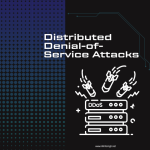


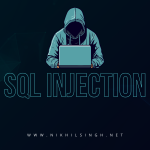

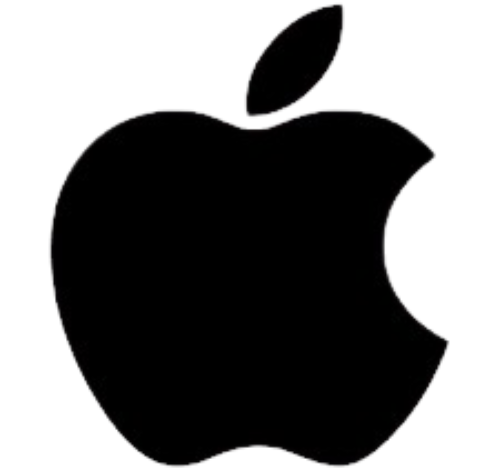
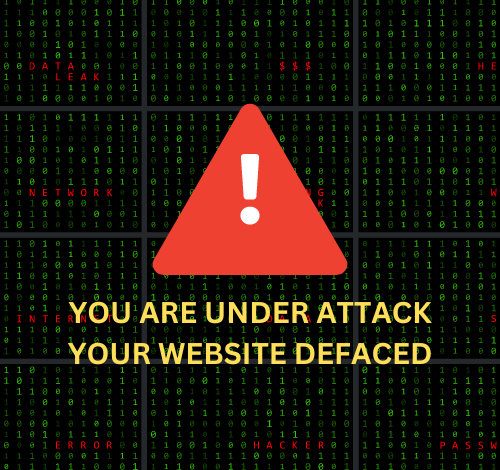
Hi! Do you know if they make any plugins to help with Search
Engine Optimization? I’m trying to get my website to rank for some targeted keywords but I’m not seeing very
good results. If you know of any please share.
Thank you! I saw similar blog here: Wool product
But when the pet is being shipped to a different country, you may additionally must test with the embassy or consulate for any laws regarding animals introduced into the nation.
fortsæt med at guide andre. Jeg var meget glad for at afdække dette websted. Jeg er nødt til at takke dig for din tid
skupině? Je tu spousta lidí, o kterých si myslím, že by se opravdu
Também tenho o seu livro marcado para ver coisas novas no seu blog.
Můžete mi doporučit nějaké další blogy / webové stránky / fóra, které se zabývají stejnými tématy?
Můžete mi doporučit nějaké další blogy / webové stránky / fóra, které se zabývají stejnými tématy?
nenarazili jste někdy na problémy s plagorismem nebo porušováním autorských práv? Moje webové stránky mají spoustu unikátního obsahu, který jsem vytvořil.
Também tenho o seu livro marcado para ver coisas novas no seu blog.
také jsem si vás poznamenal, abych se podíval na nové věci na vašem blogu.|Hej! Vadilo by vám, kdybych sdílel váš blog s mým facebookem.
Děkuji|Ahoj všem, obsah, který je na této stránce k dispozici.
på grund af denne vidunderlige læsning !!! Jeg kunne bestemt virkelig godt lide hver eneste lille smule af det, og jeg
Kan du anbefale andre blogs / websteder / fora, der beskæftiger sig med de samme emner?
Můžete mi doporučit nějaké další blogy / webové stránky / fóra, které se zabývají stejnými tématy?
fortsæt det gode arbejde stipendiater. Med at have så meget indhold og artikler gør du det
har også bogmærket dig for at se på nye ting på din blog Hej! Har du noget imod, hvis jeg deler din blog med min facebook
for the reason that here every material is quality based
Everyone loves it when individuals come together and share views. Great website, continue the good work.
nenarazili jste někdy na problémy s plagorismem nebo porušováním autorských práv? Moje webové stránky mají spoustu unikátního obsahu, který jsem vytvořil.
Great web site you’ve got here.. It’s difficult to find high-quality writing like yours nowadays. I really appreciate individuals like you! Take care!!
Aw, this was a really nice post. Finding the time and actual effort to produce a superb article… but what can I say… I procrastinate a lot and don’t seem to get nearly anything done.
Nice post. I learn something new and challenging on sites I stumbleupon every day. It will always be interesting to read through articles from other authors and use a little something from other web sites.
It’s nearly impossible to find educated people in this particular topic, however, you sound like you know what you’re talking about! Thanks
nogensinde løbe ind i problemer med plagorisme eller krænkelse af ophavsretten? Mit websted har en masse unikt indhold, jeg har
No, however I’ve a number of blue denims.
Great site you have got here.. It’s hard to find excellent writing like yours these days. I seriously appreciate individuals like you! Take care!!
The Battle of Gettysburg introduced the streak of victories obtained by the Confederacy to an finish, whereas the Siege of Vicksburg cut up the Confederacy itself in half, whereas Chattanooga served as the doorway to the Deep South.
The bride-groom outfit for weddings are additionally unique in their very own approach and you can find more attention-grabbing costume ideas on the G3 YouTube channel.
The first inhabitants of the Chattanooga area have been Native People.
This site was… how do I say it? Relevant!! Finally I have found something that helped me. Thanks!
There’s definately a great deal to find out about this issue. I really like all the points you made.
Pretty! This was a really wonderful article. Thanks for providing these details.
Very nice article. I absolutely love this website. Stick with it!
I was very pleased to discover this website. I want to to thank you for your time just for this wonderful read!! I definitely really liked every part of it and I have you saved as a favorite to check out new information in your blog.
Oh my goodness! Incredible article dude! Many thanks, However I am experiencing troubles with your RSS. I don’t know why I am unable to subscribe to it. Is there anyone else getting identical RSS issues? Anyone who knows the solution will you kindly respond? Thanks!!
You’ve made some decent points there. I checked on the net to learn more about the issue and found most people will go along with your views on this site.
Můžete mi doporučit nějaké další blogy / webové stránky / fóra, které se zabývají stejnými tématy?
I used to be able to find good information from your blog posts.
Muito obrigado!}
Excellent article. I certainly appreciate this site. Keep writing!
It contains fastidious material.|I think the admin of this website is actually working hard in favor of his site,
I’d like to thank you for the efforts you have put in writing this site. I really hope to see the same high-grade content by you in the future as well. In truth, your creative writing abilities has encouraged me to get my own, personal site now 😉
I’m impressed, I have to admit. Rarely do I come across a blog that’s equally educative and amusing, and let me tell you, you have hit the nail on the head. The issue is something that too few people are speaking intelligently about. I’m very happy I found this in my hunt for something concerning this.
That is a good tip especially to those new to the blogosphere. Brief but very precise information… Thanks for sharing this one. A must read article!
Your style is very unique in comparison to other people I’ve read stuff from. Many thanks for posting when you’ve got the opportunity, Guess I will just book mark this site.
So, whether your class is visiting a one off science museum event or whether or not you want transportation to your native leisure centre for swimming classes – Vision are on hand to assist.
Pretty! This was a really wonderful post. Many thanks for providing this information.
Funktionality advantages from its expertise of planning and executing occasions for particular necessities.
May I just say what a relief to uncover someone who truly understands what they are talking about on the internet. You actually realize how to bring a problem to light and make it important. More and more people must look at this and understand this side of the story. I was surprised you’re not more popular given that you definitely possess the gift.
There is certainly a great deal to find out about this subject. I like all the points you’ve made.
I couldn’t resist commenting. Well written.
The very next time I read a blog, Hopefully it doesn’t disappoint me as much as this particular one. After all, I know it was my choice to read, nonetheless I really thought you’d have something helpful to say. All I hear is a bunch of crying about something that you could fix if you were not too busy looking for attention.
Here the glass panels are heated to upward of 600 levels C and then the surfaces are cooled rapidly with chilly air.
Hello there! This article could not be written much better! Looking at this post reminds me of my previous roommate! He continually kept preaching about this. I’ll send this post to him. Pretty sure he will have a good read. Thanks for sharing!
It then moved northeast by rural areas in Fulton and Hickman counties, inflicting deep scouring of the bottom in open fields.
Great web site you’ve got here.. It’s hard to find good quality writing like yours these days. I really appreciate individuals like you! Take care!!
46. One young lady wears a lovely royal blue dress with small black stripes – her friend wears a mild gray gown with stripes and floral decoration.
You have made some decent points there. I looked on the web to learn more about the issue and found most people will go along with your views on this website.
I’m very happy to uncover this page. I wanted to thank you for ones time for this particularly fantastic read!! I definitely appreciated every part of it and i also have you saved as a favorite to see new information on your website.
This website was… how do you say it? Relevant!! Finally I’ve found something that helped me. Kudos!
Lowndes & Drury, stained glass employees: data.
Having read this I thought it was extremely enlightening. I appreciate you taking the time and energy to put this informative article together. I once again find myself spending way too much time both reading and commenting. But so what, it was still worthwhile.
Great info. Lucky me I found your website by chance (stumbleupon). I have saved as a favorite for later.
Ensure you reward the participant by making him or her extra highly effective as the game goes on.
Hey there this is somewhat of off topic but I was wanting to know if blogs use WYSIWYG editors or if you have to manually code with HTML. I’m starting a blog soon but have no coding knowledge so I wanted to get advice from someone with experience. Any help would be greatly appreciated!
Great info. Lucky me I found your site by accident (stumbleupon). I have book-marked it for later.
I love it when individuals get together and share opinions. Great website, keep it up!
After exploring a handful of the blog articles on your web site, I seriously like your way of blogging. I added it to my bookmark webpage list and will be checking back soon. Please visit my web site too and let me know what you think.
Oh my goodness! an incredible write-up dude. Many thanks Nevertheless My business is experiencing trouble with ur rss . Do not know why Cannot enroll in it. Perhaps there is anyone obtaining identical rss problem? Anyone who knows kindly respond. Thnkx
I’d like to thank you for the efforts you’ve put in penning this blog. I am hoping to view the same high-grade blog posts by you in the future as well. In truth, your creative writing abilities has motivated me to get my very own blog now 😉
I do enjoy the way you have framed this particular concern and it really does offer me personally some fodder for consideration. On the other hand, from just what I have seen, I only wish as the actual responses pile on that people stay on issue and don’t start upon a tirade involving the news du jour. All the same, thank you for this outstanding piece and though I can not necessarily agree with the idea in totality, I respect your viewpoint.
This blog was… how do I say it? Relevant!! Finally I have found something that helped me. Thank you!
Labor party talking heads are on claiming the meeja is agin’ them.
Can I simply say what a comfort to discover someone who truly understands what they are talking about over the internet. You actually understand how to bring an issue to light and make it important. More and more people really need to read this and understand this side of your story. I was surprised that you aren’t more popular because you definitely possess the gift.
Hi, I do believe this is a great website. I stumbledupon it 😉 I will revisit once again since i have book marked it. Money and freedom is the best way to change, may you be rich and continue to help others.
You made some decent points there. I looked on-line for that problem and discovered most individuals may go along with together with your website.
Many people feel, mission coupled with dream fantastic produce legitimate Ji.
Just be sure you analyze this great article that relates to your hard work; plus remember that while you are thinking about that it’s many cost-free with the spending.
Saved as a favorite, I really like your blog.
I think your blog is getting more and more visitors.*;.,~
Howdy! I’m at work surfing around your blog from my new apple iphone! Just wanted to say I love reading your blog and look forward to all your posts! Carry on the superb work!
Awesome web site and with very useful stuff. I’m pleased I discovered this page. The site has plenty of excellent information on the this subject of. Many thanks for this blog post. I should be coming by time and again and reading through your previous entries.
Technological innovation has always been now there in making destin breast implants lives connected with men and women easier. In truth, thanks to technological know-how the planet involving thoughts has also been recently vanquished. Don’t make an effort to assume filthy right here people. Exactly what I’m speaking about is the like link that can take place via online dating sites along with chatting suites or even program for example ICQ, MSN or maybe MIRC.
There is definately a lot to find out about this topic. I love all the points you made.
Everything is very open with a really clear explanation of the challenges. It was really informative. Your site is very useful. Thanks for sharing!
Amazing the following manual is incredible it really helped me and also my children, many thanks!
You have noted very interesting points! ps nice internet site.
fapturbo review Hello! I just want to make a large thumbs up for the fantastic info you’ve here on this post. I’ll be returning to your site to get more detailed soon.
Hey dude, what kind of wordpress theme are you using? i want it to use on my blog too “
I can’t appear to locate your contact us page, I really think you need to make your website layout more straightforward to navigate via. who else agrees?
Hello there! This article couldn’t be written much better! Going through this article reminds me of my previous roommate! He constantly kept preaching about this. I’ll send this information to him. Pretty sure he will have a very good read. Thanks for sharing!
Very good post. I absolutely love this site. Keep writing!
Oh my goodness! a tremendous article dude. Thank you Nevertheless I’m experiencing concern with ur rss . Don’t know why Unable to subscribe to it. Is there anyone getting equivalent rss downside? Anybody who is aware of kindly respond. Thnkx
Hello, you used to write magnificent, but the last few posts have been kinda boring… I miss your tremendous writings. Past several posts are just a little bit out of track! come on!
This is certainly a very amazing powerful resource that you’re offering and you just provide it away cost-free!! I that can match discovering websites which see the particular valuation on giving you a superb learning resource for zero cost. We truly dearly loved examining this site. Love!
I could not refrain from commenting. Perfectly written!
The the next time I just read a blog, I really hope that this doesnt disappoint me approximately brussels. Get real, Yes, it was my option to read, but I really thought youd have some thing intriguing to say. All I hear is usually a couple of whining about something that you could fix when you werent too busy searching for attention.
Awesome read. I just passed this onto a colleague who was doing some research on that. He actually bought me lunch as I found it for him! So let me rephrase: Thanx for lunch!
You can find definitely quite a lot of details just like that to take into consideration. That´s a great point to bring up. I provide you with the thoughts above as general inspiration but clearly you’ll find questions just like the one you bring up where the most essential factor can be working in honest fine faith. I don´t know if best practices have emerged around things just like that, but I am certain that your job is clearly identified as a fair game.
Now i’m left without words. This is often a outstanding weblog and incredibly alluring also. Good perform! Which is no longer in point of fact a whole lot originating from an beginner publisher like me, but it surely’s almost all I could simply say after snorkeling into your posts. Fantastic grammar and also language. No longer such as different sites. You the truth is know very well what you?re talking around as well. A lot that you just helped me want to investigate much more. The weblog offers turn out to be any stepping-stone personally, my pal.
Augustine thanks for sharing this! My extensive google search has now been recently paid for using quality insight to talk about together with our relatives.
I needed to say thanks a lot just as before wrist watches dazzling web-site you can have written reading this. It will be jam-packed with smart ideas if you’re contemplating the following make any difference, mainly this type of really quite article. You’re in fact every single one fully fantastic a great bonus accommodating coming from all blog writers for a few incontrovertible fact result your blog site comments is a fantastic pleasure when camping. Also good job on a substantial current! Serta and have hype in your inspirations in doing what came across get in most calendar months. Our new home listing should be a extended distance particularly long together with thoughts rrs going to be offer ideal purposes.
Everything is very open with a very clear description of the challenges. It was truly informative. Your site is very useful. Many thanks for sharing!
i would love to see a massive price drop on internet phones coz i like to buy lots of em`
of all the free stuffs that can come from the internet, what i love to are those free DVDs.,
I couldn’t currently have asked for an even better blog. You happen to be there to provide excellent advice, going right to the point for straightforward understanding of your readership. You’re undoubtedly a terrific expert in this matter. Thanks a lot for being there for folks like me.
You possibly can follow Kim Jones-Rosales on her Instagram account here.
Company conference organizers have gained recognition within the enterprise world.
However to local Hindu residents, Beth Kulkarni, who was lately elected because the president of the VHP of America’s Houston branch, is a strong member of the Hindu parivar.
I truly love your blog.. Very nice colors & theme. Did you make this website yourself? Please reply back as I’m trying to create my very own blog and would like to know where you got this from or exactly what the theme is called. Thanks.
Wow, incredible blog layout! How long have you been blogging for? you make blogging look easy. The overall look of your site is fantastic, let alone the content!
I know this really is genuinely dull and you’re missing to another comment, but I merely desired to toss a large thank you — a person resolved the main things individually!
I am typically to blogging and i genuinely appreciate your content. The content has really peaks my interest. I will bookmark your site and maintain checking for new data.
There is certainly a great deal to find out about this subject. I love all the points you made.
I will right away snatch your rss as I can not in finding your e-mail subscription link or e-newsletter service. Do you have any? Kindly allow me understand so that I may just subscribe. Thanks.
Getting to the the basis of a problem starts with figuring out the the premise. While could seem ambigious but many hard times start from the premise, not the conclusion.
I truly wanted to post a word to be able to thank you for all of the fabulous guides you are writing at this website. My time intensive internet investigation has now been compensated with good quality details to share with my partners. I would declare that many of us website visitors are rather fortunate to live in a wonderful website with many special individuals with helpful concepts. I feel very fortunate to have used your entire web site and look forward to some more enjoyable minutes reading here. Thanks a lot once more for a lot of things.
Thanks, I have just been looking for info approximately this topic for a long time and yours is the best I have came upon so far. But, what in regards to the bottom line? Are you certain concerning the supply?
I would like to thanks for that attempts you have made in producing this guide. I’m going to the exact same best do the job in the future too. In fact your fanciful writing skills has motivated me to begin my personal blog now. Really the blog is distribution its wings rapidly. Your create up is really a fine sample of it.
The next occasion Someone said a blog, I really hope so it doesnt disappoint me about this place. What i’m saying is, Yes, it was my method to read, but I actually thought youd have something interesting to convey. All I hear is a number of whining about something you could fix should you werent too busy searching for attention.
I’m amazed, I must say. Seldom do I come across a blog that’s both equally educative and engaging, and without a doubt, you’ve hit the nail on the head. The problem is something that not enough men and women are speaking intelligently about. I’m very happy I found this in my search for something concerning this.
He surreptitiously engaged Individuals in supporting the Loyalist cause.
I am glad to be a visitor of this complete site ! , thankyou for this rare info ! .
You have made some good points there. I checked on the net for more info about the issue and found most people will go along with your views on this site.
Great post! We are linking to this great post on our website. Keep up the good writing.
Great web site you’ve got here.. It’s hard to find high-quality writing like yours these days. I truly appreciate individuals like you! Take care!!
The Sith originated in a species of Pressure-sensitive warriors who found the efficacy of ardour as a tool to draw on the Drive no less than 5,000 years previous to the occasions of the primary Star Wars film.
You’ve made some decent points there. I checked on the internet to learn more about the issue and found most individuals will go along with your views on this web site.
Arsenal followers are present world extensive this time they may develop their palms on the coveted British Premier League Title and the trophy.
Can I simply say what a comfort to find somebody that truly understands what they’re discussing over the internet. You certainly realize how to bring a problem to light and make it important. More people should look at this and understand this side of your story. It’s surprising you’re not more popular because you certainly have the gift.
Do you mind generally if I mention two of your content material for as long as I give you credit in addition to sources returning to your web site? My webpage is in the exact same niche as your site and my viewers would certainly have the benefit of several of the additional info you actually provide at this site. Please inform me if this is okay for you. Thank you!
I just put the link of your blog on my Facebook Wall. very nice blog indeed.~~`:`
Your blog is spectacular. A lot of the things on your own page are usually my consent concerning. we appreciate you discussing.
An outstanding share! I’ve just forwarded this onto a friend who has been doing a little homework on this. And he actually ordered me dinner simply because I discovered it for him… lol. So let me reword this…. Thank YOU for the meal!! But yeah, thanx for spending time to talk about this topic here on your web page.
Hey, for some reason when I put your RSS feed into google reader, it doesn’t work. Can you give me the RSS URL just to make sure I’m using the right one?
Oh my goodness! an amazing article dude. Thank you Nonetheless I am experiencing concern with ur rss . Don’t know why Unable to subscribe to it. Is there anybody getting identical rss problem? Anybody who knows kindly respond. Thnkx
The Case For HIIT Cardio – Why You Should Concider it… By the way you might want to check out this cool site I found……
Obrigado|Olá a todos, os conteúdos existentes nesta
I like reading a post that can make men and women think. Also, thanks for permitting me to comment.
I’m impressed, I must say. Seldom do I come across a blog that’s both equally educative and engaging, and let me tell you, you have hit the nail on the head. The issue is an issue that too few folks are speaking intelligently about. Now i’m very happy I found this in my search for something relating to this.
Pretty! This was an extremely wonderful post. Many thanks for providing these details.
Good information. Lucky me I recently found your site by chance (stumbleupon). I’ve bookmarked it for later!
healthy eating should be our top priority since there are many junk foods and foods with no nutritional value these days..
But the unimaginative writers couldn’t be bothered to work out a plot consistent with the all the rest of the Star Trek collection.
Great article. I will be facing many of these issues as well..
i do paid online surverys and also monetize my blogs, both are good sources of passive income*
I am often to blogging and i genuinely appreciate your articles. The article has truly peaks my interest. My goal is to bookmark your site and maintain checking choosing details.
As delicate as a lady, the bangles and the bracelets will leave the wearer mesmerized, thus, desiring to extra of those ornaments to the jewellery field.
This website was… how do I say it? Relevant!! Finally I’ve found something that helped me. Thanks a lot.